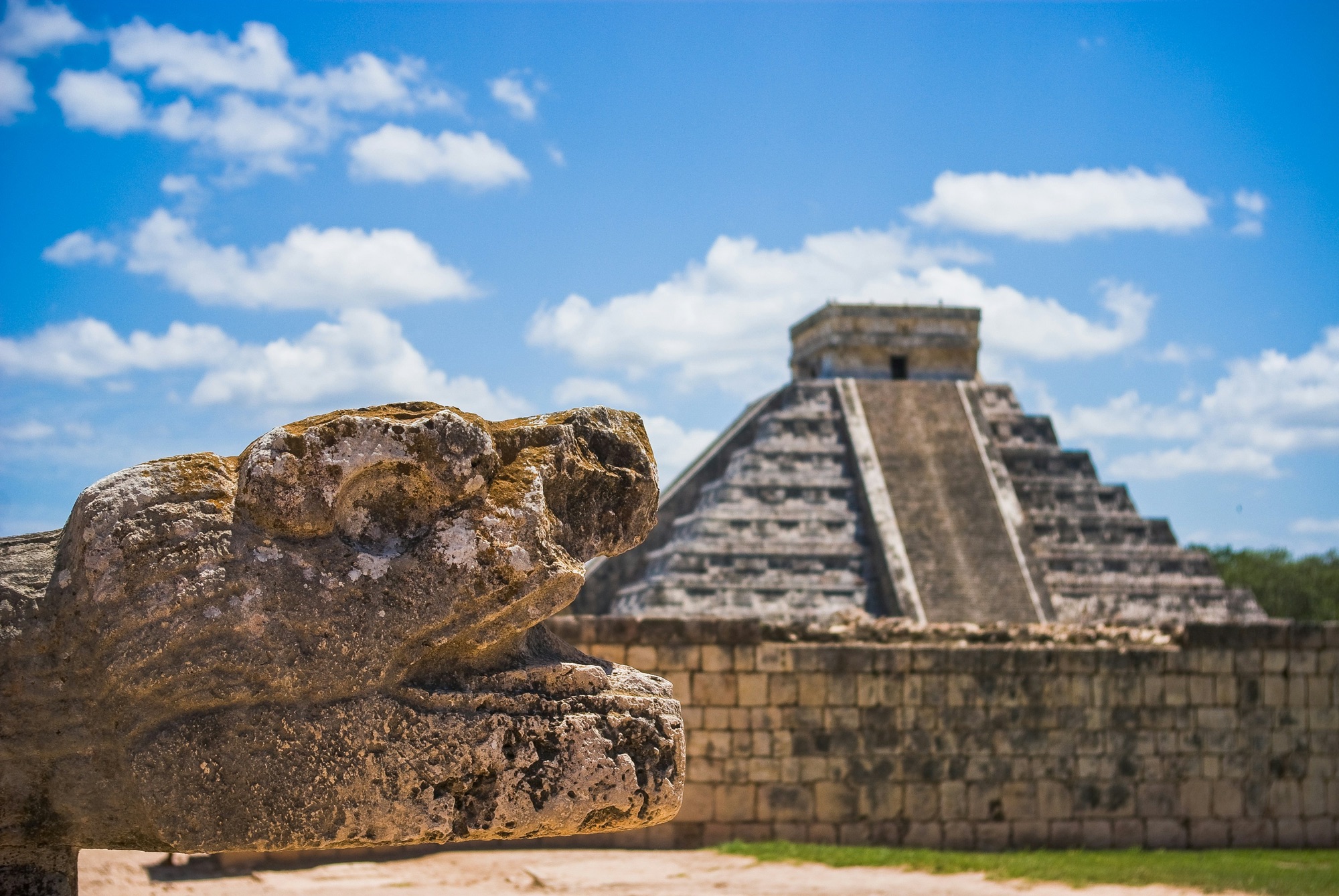Mexico is one of the most popular travel destinations for Americans, known for its beautiful beaches, vibrant culture, historic landmarks, and delicious cuisine. However, like any foreign country, Mexico has its own set of customs, cultural norms, and practical considerations that can help make your trip more enjoyable and smooth. Whether you’re exploring the ancient ruins of Chichén Itzá, lounging on the beaches of Cancún, or strolling through the colorful streets of Mexico City, here are 17 things Americans should know before visiting Mexico.
1. Mexico Is Much More Than Beaches and Resorts
While Mexico is famous for its stunning beach resorts like Cancún, Cabo San Lucas, and Playa del Carmen, the country offers a much broader travel experience. Mexico is home to rich cultural and historical heritage sites, including Mayan and Aztec ruins, vibrant cities, and incredible natural wonders. Cities like Mexico City, Guadalajara, and Oaxaca are renowned for their history, art, and cuisine. The country’s diversity extends from the deserts of the north to the lush jungles in the south, so consider exploring beyond the typical tourist hotspots.
For example, visiting the Pueblos Mágicos (Magic Towns) allows travelers to discover Mexico’s smaller, traditional towns with unique history, culture, and architecture. Whether it’s hiking in the Copper Canyon, exploring colonial cities like San Miguel de Allende, or visiting the tequila distilleries in Jalisco, there’s a wealth of experiences to explore beyond the beaches.
2. Learn Some Basic Spanish
While you’ll find English speakers in major tourist areas, it’s important to remember that Spanish is the official language of Mexico, and many locals—especially in smaller towns—may not speak English. Learning basic Spanish phrases will not only make your trip smoother but will also be appreciated by locals. Simple phrases like “Hola” (Hello), “Gracias” (Thank you), and “¿Dónde está?” (Where is?) can go a long way in improving communication.
Knowing basic questions like “¿Cuánto cuesta?” (How much does it cost?) or “La cuenta, por favor” (The check, please) when dining out can enhance your experience. Even if your Spanish isn’t perfect, Mexicans are generally warm and appreciative of the effort.
3. Tipping Is Customary
Tipping is widely practiced in Mexico, and it’s important to understand when and how much to tip. In restaurants, a 10-15% tip is customary, and some higher-end establishments may expect closer to 20%, similar to the U.S. In smaller cafes or casual eateries, rounding up the bill or leaving small change is sufficient.
In hotels, it’s customary to tip bellhops and housekeeping, typically around 20-50 pesos per service. Taxi drivers do not typically expect tips, but rounding up the fare is appreciated. Tour guides and drivers, especially for organized excursions, generally expect a tip as well. Be prepared to carry small bills or coins for tipping, especially in places where card payments might not be accepted.
4. Be Mindful of the Water
In most parts of Mexico, tap water is not safe to drink for visitors, and even locals often prefer bottled or filtered water. Stick to drinking bottled water, which is widely available and inexpensive. In restaurants, always ask for bottled or purified water (often referred to as agua purificada), and avoid ice unless you’re sure it’s made from filtered water.
When brushing your teeth or washing fruits and vegetables, use bottled water to avoid any stomach issues. Many hotels and accommodations provide bottled water for guests, and it’s a good idea to carry a small bottle with you when you’re out exploring.
5. Mexican Cuisine Is More Than Tacos
While tacos are undoubtedly delicious and popular, Mexican cuisine is incredibly diverse and goes far beyond what you might be familiar with from Mexican restaurants in the U.S. Each region of Mexico offers its own specialties and culinary traditions. For example, Oaxaca is known for its mole sauces, while Yucatán is famous for dishes like cochinita pibil (slow-roasted pork) and sopa de lima (lime soup).
Don’t miss the chance to try authentic street food, like tlayudas (crispy tortillas topped with various ingredients), tamales, elote (grilled corn with toppings), and churros. If you’re feeling adventurous, sample regional delicacies such as chapulines (toasted grasshoppers) in Oaxaca. Mexico’s rich culinary heritage includes fresh, flavorful ingredients, and it’s worth exploring different dishes wherever you go.
6. Cash Is King in Many Places
Although credit cards are widely accepted in larger cities, hotels, and restaurants, cash is still king in many parts of Mexico, especially in smaller towns, markets, and for street vendors. It’s important to carry small bills and Mexican pesos (MXN) for everyday transactions, as some places may not accept cards or might offer discounts for cash payments.
ATMs are widely available in cities and towns, but it’s advisable to withdraw enough cash to cover your expenses when traveling to more remote areas. When using ATMs, try to use machines located inside banks or secure locations to avoid scams or theft. Also, inform your bank about your travel plans to avoid any issues with withdrawing money abroad.
7. Transportation: Taxis, Uber, and Buses
Taxis are widely available in most Mexican cities, but it’s important to use authorized taxis (often referred to as sitio taxis) from official taxi stands or by calling a taxi company. Avoid hailing random taxis off the street, particularly in larger cities like Mexico City, to ensure your safety and avoid scams.
In many major cities, Uber is available and often more affordable and safer than street taxis. If you’re traveling between cities, long-distance buses are a popular and comfortable option, with companies like ADO offering reliable service across the country. First-class buses are modern and often equipped with air conditioning and onboard entertainment, making them a great option for long trips.
8. Stay Informed About Safety
Like any country, Mexico has regions that are safer than others, and it’s important to stay informed about the safety situation in the areas you plan to visit. While many popular tourist destinations are considered safe, some regions, particularly near the U.S.-Mexico border or in certain states, may experience higher levels of crime or political unrest. Check travel advisories from the U.S. Department of State before your trip and exercise caution when traveling to less touristy areas.
When in larger cities, be aware of your surroundings, avoid flashing valuables, and stick to well-lit, busy areas at night. It’s also wise to avoid excessive alcohol consumption, as this can make you an easier target for petty crime. Most visitors to Mexico have safe and enjoyable trips, but staying alert and informed is key.
9. Respect Cultural Norms and Customs
Mexicans are generally warm, friendly, and respectful, and it’s important to reciprocate this attitude. When greeting someone, a handshake is common, and in more personal settings, women may greet each other with a light kiss on the cheek. It’s customary to say “buenos días” (good morning), “buenas tardes” (good afternoon), or “buenas noches” (good evening) when entering shops or interacting with people.
Mexicans value politeness, so addressing people formally using señor or señora (Mr. or Mrs.) is appreciated in professional or unfamiliar settings. Public displays of affection, while acceptable in many areas, may be frowned upon in more conservative regions, so it’s always good to be mindful of your surroundings.
10. Pack for the Weather: Diverse Climate Zones
Mexico’s climate varies significantly depending on the region and time of year. Coastal areas like Cancún and Puerto Vallarta can be hot and humid year-round, while cities at higher elevations, such as Mexico City or San Cristóbal de las Casas, can be cooler, especially at night.
If you’re visiting during the rainy season (May to October), be prepared for sudden downpours, especially in the tropical areas. In contrast, desert regions in the north, such as Baja California and Chihuahua, can experience extremely hot days and chilly nights. Always check the weather forecast for the specific regions you plan to visit and pack accordingly.
11. You May Need Sunscreen and Mosquito Repellent
Due to Mexico’s sunny climate, especially in coastal and tropical areas, sunscreen is essential to protect your skin from harmful UV rays. Sunscreen can be more expensive in tourist areas, so it’s a good idea to bring your own from home. Additionally, in more rural or jungle-like regions (such as Chiapas or Yucatán), mosquitoes can be a problem, particularly during the rainy season, so mosquito repellent is recommended.
For those visiting beach resorts or tropical destinations, reef-safe sunscreen is encouraged to help protect Mexico’s coral reefs and marine life.
12. Public Transportation: Safe and Affordable
Mexico offers a variety of public transportation options, including buses, colectivos (shared vans), and metro systems in large cities like Mexico City. Public buses are an affordable and efficient way to get around, especially in cities and towns. Mexico City’s Metro is one of the largest and cheapest in the world, though it can get crowded during peak hours.
If you’re traveling within Mexico City or between cities, the Metrobús or long-distance buses are reliable and safe options. Colectivos are commonly used in rural areas and smaller towns for short-distance travel. These shared vans are cheap but can be crowded, so keep an eye on your belongings.
13. Try to Avoid Drinking Alcohol in Excess
While enjoying a margarita or tequila-based cocktail is part of the Mexican experience, it’s important to drink responsibly, especially when traveling. Excessive alcohol consumption can increase the likelihood of theft or scams and may lead to risky situations. Keep track of your belongings and avoid leaving your drinks unattended.
If you’re visiting areas known for their nightlife, such as Cancún or Puerto Vallarta, always arrange a safe way to get back to your accommodation and stick to well-lit, busy areas. Also, be aware that the legal drinking age in Mexico is 18, so carry your ID with you if you plan to drink at bars or restaurants.
14. Health Care Is Accessible
Mexico has a solid healthcare system, and many doctors in major cities speak English, particularly in tourist areas. If you need medical attention during your trip, it’s relatively easy to access private clinics or hospitals, and many offer high-quality care at affordable rates. However, it’s still wise to purchase travel insurance before your trip to cover any potential medical expenses, including emergencies or prescriptions.
Pharmacies are common throughout Mexico, and many over-the-counter medications are available without a prescription. However, it’s always a good idea to bring any essential medications you need from home, as availability may vary.
15. Electricity and Power Outlets Are the Same as in the U.S.
If you’re traveling from the U.S., you won’t need any adapters or converters for your electronics, as Mexico uses the same 110-volt power outlets with the same plug type (Type A and Type B). This means you can easily charge your phone, laptop, or camera without worrying about compatibility.
However, if you’re staying in older accommodations or rural areas, you may encounter occasional power outages, so it’s always a good idea to charge your devices overnight and carry a portable charger for day trips.
16. Safety When Swimming: Be Cautious of Rip Currents
Mexico is home to some of the most beautiful beaches in the world, but it’s important to be aware of ocean safety, particularly if you’re swimming in areas with rip currents. Some beaches, particularly on the Pacific Coast and around Cabo San Lucas, have strong currents and large waves, which can be dangerous for swimmers.
Always pay attention to warning flags on the beach. A red flag means no swimming, a yellow flag indicates caution, and a green flag means it’s safe to swim. If you’re unsure about the conditions, ask a lifeguard or local beachgoers before entering the water.
17. Embrace the Siesta Culture
In smaller towns and rural areas, you may notice that many businesses, including shops and restaurants, close for a siesta in the early afternoon, typically between 2:00 PM and 4:00 PM. This tradition allows locals to take a break, enjoy a leisurely lunch, and relax during the hottest part of the day. While not as common in larger cities and tourist areas, it’s a good idea to plan your shopping or dining around this downtime, especially if you’re visiting more traditional regions.
Conclusion
Mexico is a vibrant and diverse country with rich cultural traditions, stunning landscapes, and welcoming people. By understanding the local customs, learning a few key phrases, and staying aware of practical considerations, you can have an enjoyable and safe trip. Whether you’re exploring the bustling markets of Mexico City, relaxing on the beaches of Cancún, or savoring the flavors of Oaxaca, Mexico offers a travel experience filled with adventure and warmth.




